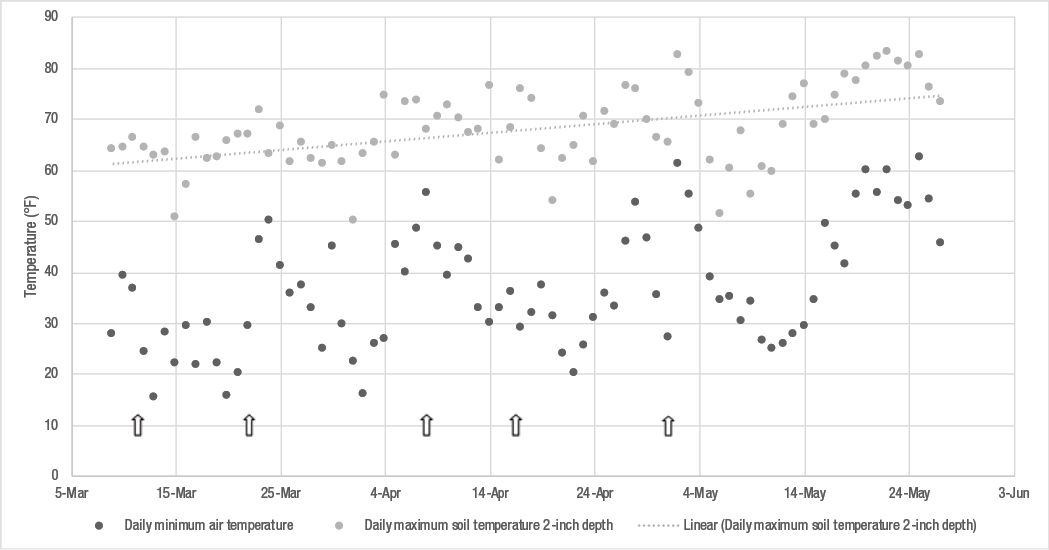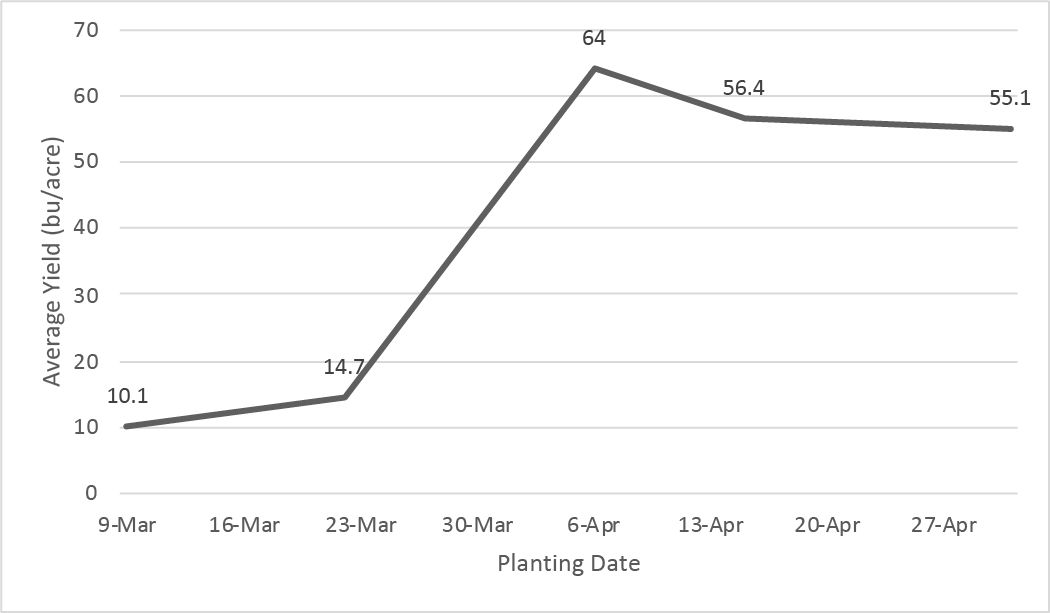3 MIN READ
Ultra-Early Soybean Planting Date Demonstration
March 10, 2022
TRIAL OBJECTIVE
Recent on-farm research, adoption of seed treatments, and the ability of soybeans to create more nodes before flowering has led farmers to plant soybeans earlier in the spring to help maximize yield potential.
Costs of replanting includes seed and fuel, but also the time and labor to make additional passes across fields.
This trial compared ultra-early to normal planting dates for soybeans in Michigan.
RESEARCH SITE DETAILS
A demonstration trial was established with a single replication and strip-plot design with a 3.0 maturity group (MG) soybean.
There were five planting dates in 2021: March 9th, March 22nd, April 6th, April 15th, and May 1st.
| Location | Mason, MI |
| Soil Type | Loam |
| Previous Crop | Corn |
| Tillage Type | Conventional |
| Planting Date | multiple |
| Harvest Date | 9/30/21 |
| Potential Yield (bu/acre) | 70 |
| Seeding Rate (seeds/acre) | 140,000 |
UNDERSTANDING THE RESULTS
A hard frost occurred the morning of April 2nd killing most of the emerged soybeans from March 9th and 22nd planting dates (Figure 1).
The March 9th and 22nd planting date treatments had very few plants remaining at harvest but produced 10 and 14 bu/acre, respectively.
The greatest yield was obtained from the April 6th planting date (Figure 2).


KEY LEARNINGS
- Warmer soil temperature trends occurring later in the spring buffer cold night-time temperatures and provide protection for young seedlings.
- Early-season risk due to frost damage is greater in soybean than corn, due, in part, to rapid epigeal emergence of soybeans that expose the tender growing point of the hypocotyl.
- Early planting of soybeans can produce greater yields, but growers should allow soil temperatures to increase and watch the near-term forecasts to reduce the risk of having early stands killed by frost.
- The wet, cool soil conditions often associated with early planting can also result in increased levels of seed decay, damping off, and root rot diseases. Therefore, it’s important that seeds are protected by a quality seed treatment.
- Although not statistically different, planting early (April 6th planting date) resulted in a numerically higher yield.
3011_R24